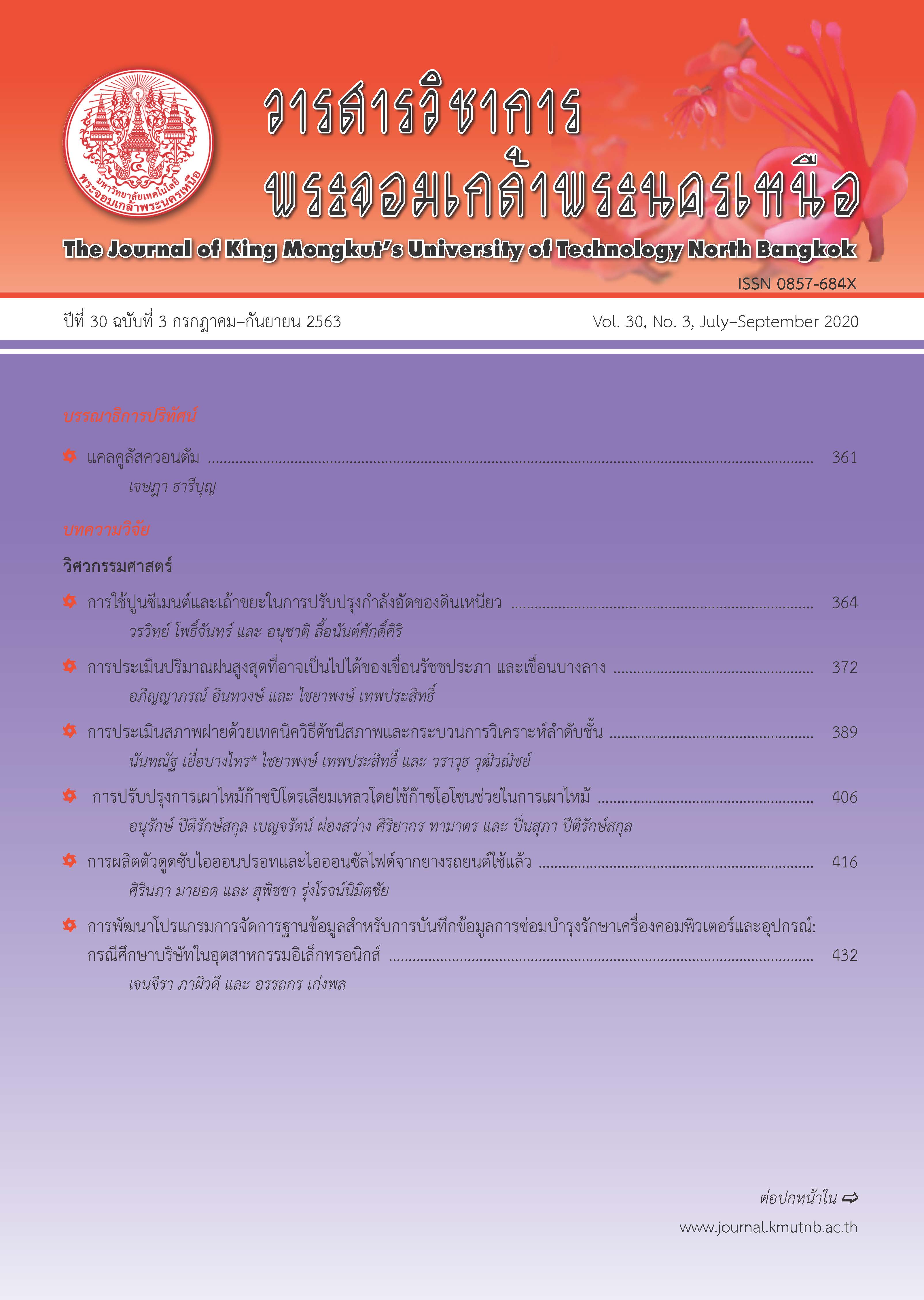Study and Development of Gamma Stirling Engine by Heat Source from Liquefied Petroleum Gas Process
Main Article Content
Abstract
This research is a study and development of a Stirling engine prototype. Since this type of engine is an external combustion type, it can get a variety of heat sources. The design and the construction of Stirling engine prototype was based on the principle of equation analysis and Belle Number hypothesis to estimate the size of the engine. In determining the strength of materials by finite element method (FEA; Finite Element Analysis), Top Solid program was used. While the analysis of the material's heat transfer, the CFD program (Computer Fluid Dynamics) was used to measure the various parameters which are the working pressure inside the hot and cold side, heat source temperature at various locations, angular velocity angular acceleration, and the coolant flow rate to help analyze the engine power. Air is used as working substance with an absolute internal pressure equal to 1 bar. In heating the engine, Liquefied Petroleum Gas (LPG) burners are used as heat source. This study was conducted by with the heat with to the working substance inside the hot side with the temperature around 326–448 degrees celsius and the cold side cylinder with with temperature of 35.75–37.75 degrees celsius. The flow rate of cooling water was also adjusted to see the effect on the work force. The results showed that the developed Stirling engine reached the engine speed of approximately 272 rpm, the temperature of the working substance inside the hot side was 368 degrees celsius, the flow of coolant was 2 lpm and the power from the area under the P – V Diagram graph was 3.02 W. In this research, the pressure in the hot and cold side were analyzed to find the Indicated Power and can be concluded that if only one side of the pressure is analyzed, the result may be more than 10% deviation.
Article Details
The articles published are the opinion of the author only. The author is responsible for any legal consequences. That may arise from that article.
References
[2] J. G. Rizzo, The Stirling Engine Manual. Camden miniature steam services, 1997.
[3] G. Walker, Stirling Engine. Oxford Science Publication, 1980, pp. 73–84.
[4] C. D. West, “A historical perspective on Stirling engine performance,” in Proceedings of th 23th Intersociety Energy Conversion Engineering Conference, 1998, pp. 889004.
[5] Buncha, “Development of a prototype double-acting Stirling engine,” Department of Mechanical Engineering, Faculty of Engineering, Srinakharinwirot University, Thailand, 2011 (in Thai).
[6] T. Kitipong, “The stirling engine as power generator by heat source from liquefied petroleum gas processes,” in Proceedings 15th Conference on Energy Network of Thailand, 2019, pp. 500–508 (in Thai).
[7] H. Damirchi, G. Najafi, S. Alizadehnia, R. Mamat, C. S. Nor Azwadi, W. H. Azmi, and M. M. Noor, “Micro combined heat and power to provide heat and electrical power using biomass and Gamma-type Stirling engine,” Applied Thermal Engineering, vol. 103, pp. 1460–1469, 2016.
[8] T. Borirak, “Design and performance test of a single ActingGamma stirling engine,” SWU Engineering Journal, vol. 11, no. 2, pp. 99–105, 2016.

